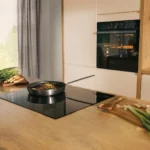Every summer season, a huge number of dry closets appear on the shelves. The problem of choice is natural: it is not so easy to decide which option to choose so as not to lose on the price and satisfy your needs. Before going to the store, you should carefully study the types, characteristics, and features of these devices. Whoever has the information owns a reliable and functional dry closet.
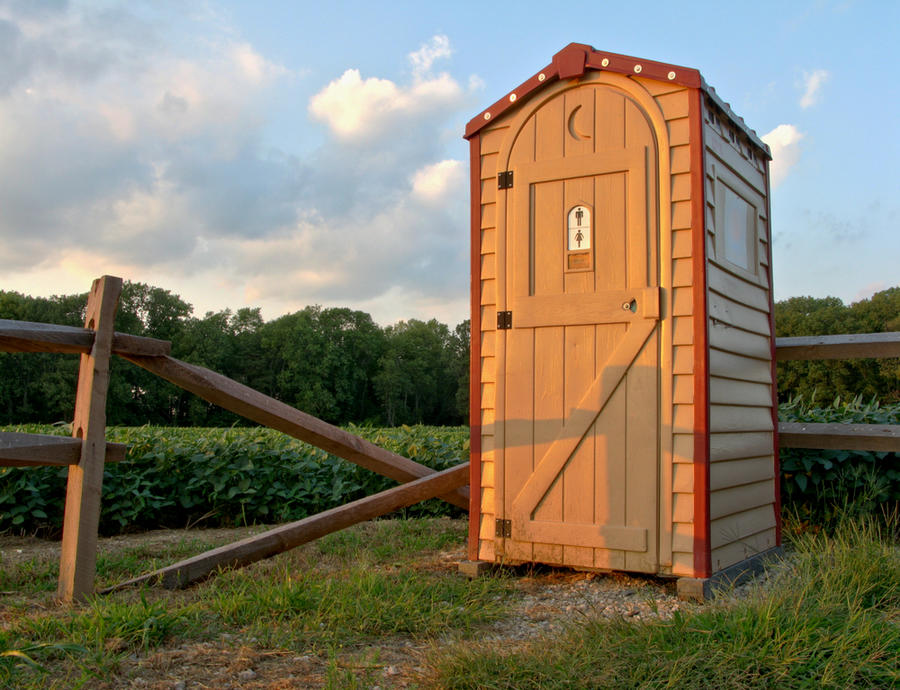
The history of the appearance of dry toilets
In 1873, Henry Mole invented a wooden chair with a hole for a bucket. Attached to the back of the chair was a container of peat and a manual shutter. This was the first step towards creating dry closets.
True, that device was a little similar to modern ones. The dry closet became the way everyone imagines it now thanks to Peter Buesing. Without meaning to, he made one of the most useful inventions. This happened in the Canadian province of Nova Scotia in 1979. Emily, Peter’s grandmother, suffered a severe stroke. While visiting her in the hospital, he noticed that she could not walk to the toilet on her own, and the hospital duck did not meet all the needs of a person with limited mobility.
Since Peter himself was an aircraft designer for the Boeing concern, he knew very well the structure of the vacuum toilet in airplanes. Brilliantly using his knowledge, the engineer presented his grandmother with a portable toilet as a gift. The undeniable advantages of the invention were: mobility, lack of odor, durability, and independence from plumbing. In 1981, Büsing patented his creation, and it began to be widely used. Gradually, such toilets began to have new functions and new modifications.
Types and characteristics of dry toilets
For installation at your summer cottage, you can choose a portable or stationary dry closet. A portable (portable) dry closet is convenient to take with you; and easy to move if you don’t like its location. It can be placed in a separate toilet room or the house (for example, when it gets cold outside).
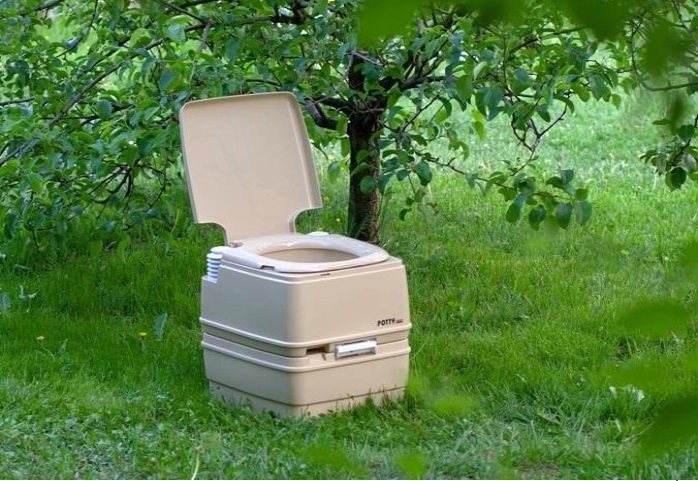
The stationary one is a ready-made structure consisting of the cabin itself and the lower part for collecting waste. It is very difficult to perform any maneuvers with it.
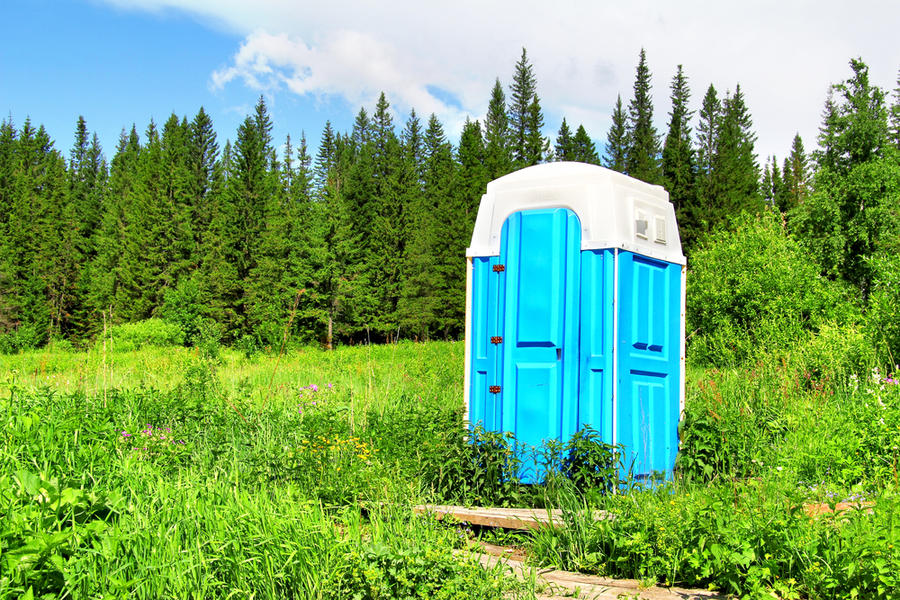
There are three types of dry closets. They are divided according to the method of waste processing.
Peat dry toilet
Ideal for use in the countryside. Its design consists of an upper part (seat and peat container) and a lower part (sealed reservoir for accumulating sewage). A peat mixture in which special microorganisms live is used as a substance that processes waste. Therefore, it is important to know that
you cannot use regular peat, since it does not contain the required amount of microorganisms necessary for the breakdown of waste. Once in the storage tank, the waste products are poured into the peat mixture, and the microorganisms immediately begin to work. The output is material that can be used as plant food (after waiting for the full cycle of composting in a special pit) since no chemical reagent is used at any stage of decomposition.
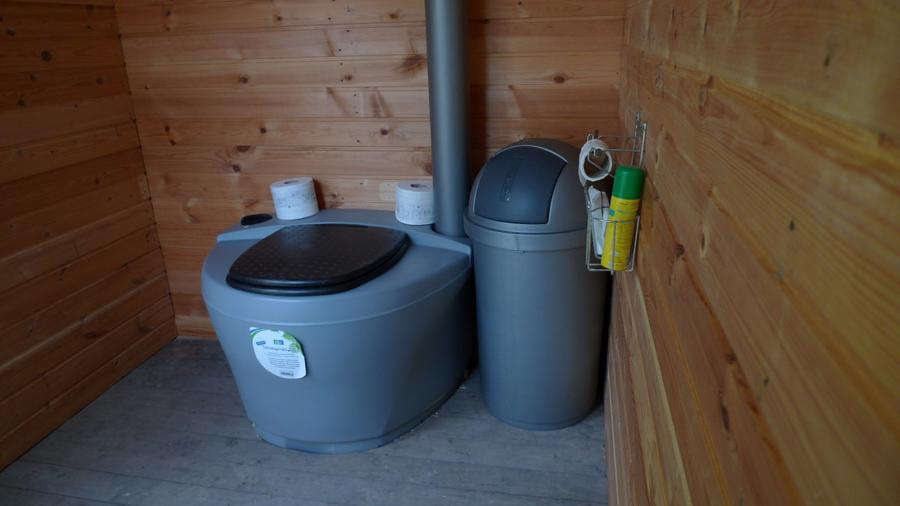
You can install such a toilet both in the house and in an outdoor toilet stall. He is not afraid of frosts, since it does not involve the use of water for draining. Instead of the usual draining with water, you need to twist the handle so that the required amount of mixture pours out.
If a peat dry closet is constantly used by more than two people, you should think about drainage for liquid waste, because the sawdust contained in the peat mixture cannot cope with them. After such waste enters the storage tank, it is cleaned and discharged into the soil or a special pit, depending on what the owner of the site chooses.
Many people are concerned about the problem of unpleasant odor. To avoid its occurrence, ventilation should be mounted. The creators of dry closets prudently included the corresponding pipes in the peat dry closet kit. Ventilation is vented upward, through the wall or roof.
As for emptying the storage tank, this is a difficult question – in the literal sense of the word. When cleaned once every six months, the tank weighs about 100-120 kg. Many models have wheels to roll the container to the waste disposal site. But a woman or an elderly person is not able to do this. Therefore, you don’t have to wait for the emptying recommended in the instructions once every six months – have it as often as is convenient (at least once a week).
So, the advantages of a peat dry closet :
- environmental friendliness;
- fertilizer production ;
- there is no need for frequent emptying (of course, if a person can remove 100 kg at a time);
- ease of tank cleaning (the tank is separated and transported to the dump site);
- inexpensive consumables.
Minuses :
- incomplete cleaning of the toilet (no flushing);
- the need for ventilation;
- the mechanism for scattering peat does not allow the waste to be poured evenly (most often you have to use a regular scoop)
Liquid (chemical) dry closet
The next most popular type of device; is also a good option for a summer residence. The principle of its operation is simple: water is poured into the upper tank, which drains and washes waste into the lower container, in which it dissolves under the influence of special chemical liquids. The lower container is equipped with a valve that prevents the spread of unpleasant odors. Some models have a tank full indicator – a very convenient thing (you don’t need to constantly remind yourself of the “hour X” – the need to remove the tank).

When the tank is full, it is disconnected from the top and transported to the drainage point. After emptying, it should be rinsed with water and filled with new liquid for chemical toilets in the volume specified by the manufacturer.
Liquids are also different:
- formaldehyde
Very toxic substances. In the usual dacha version, they cannot be used.
- ammonium
Break down waste within a week; operate practically without access to oxygen. They are no different from harmlessness, just like formaldehyde.
- biological
This is what a summer resident needs. Contains live bacterias; are safe and even allows you to compost waste.
Important! For such a toilet you need special toilet paper, which will completely dissolve in the tank.
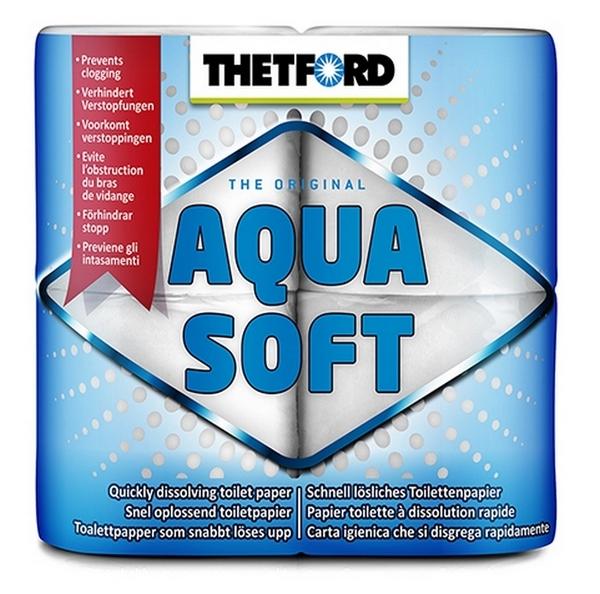
The frequency of emptying the tank depends on how many people use the toilet. The tank volume is relatively small (12-24 l). If the device is designed for one person, cleaning once every two weeks is sufficient; if it’s for a family, you’ll have to take it out at least once a week, or even every day.
Advantages of a chemical dry toilet:
- mobility;
- autonomy;
- lightweight;
- does not require ventilation;
- absorbs waste odor.
Minuses :
- toxicity (when using formaldehyde and ammonium liquids);
- fixed costs for purchasing liquids;
- unpleasant odor from the chemical;
- frequency of tank emptying.
Electric dry closet
Innovation in “toilet” technologies. Yes, exactly electric! This model appeared relatively recently. The most important conditions for its operation are the availability of electricity and ventilation. The bottom tank of the miracle toilet consists of two parts: a container for liquid waste and a compartment for solid waste and toilet paper. Liquid waste is discharged through drainage into the soil or pit. Solids are dried using a compressor. The solid waste tank is cleaned 1-2 times a year. Unpleasant odors are removed through ventilation.

Pros of the device:
- lack of additional consumables;
- ease of use;
- ease of cleaning;
- rare cleaning;
- no unpleasant odors.
Minuses :
- forced ventilation required;
- no electricity – no toilet;
- can only be used while sitting (including for men), since the waste tank opens under the influence of a person’s weight. It is worth reading the instructions carefully: in some models, this restriction applies to the entire tank, and in some – only to the solid waste container;
- price: this is quite an expensive pleasure.
What to look for when choosing a dry closet
Having figured out the location and type of device, we should not forget that there are other important characteristics by which dry toilet models are selected:
- Flush device
To keep your toilet clean longer, choose a device that allows the flush to cover a larger area of the toilet. For example, where a two-way flush is provided.
- Pressure valve
The valve helps to empty the toilet evenly and prevents water from splashing.
- Storage tank full indicator
This timely signal about the need to empty the tank will most likely not be superfluous.
- Materials from which the dry closet is made
The degree of its maximum load directly depends on this characteristic.
- Storage tank volume
The larger the tank volume, the less often it will have to be cleaned. A 12-liter tank is filled in 30 times, and a 20-liter tank in 50 times (when used by one person). Typically, the manufacturer indicates recommended emptying times based on the number of people using the device.
- Dimensions
If you are accustomed to the standard height of a city toilet, you don’t have to change your habits, but simply purchase a dry toilet with a height of 40-46 cm. If there is a need for greater mobility (for example, transporting the device in a car), you can choose more compact models. In any case, the height of the toilet should be comfortable for both adults and children.
- Availability of sewerage
In the absence of sewerage, the most convenient option is a mobile dry toilet, whose location can vary depending on the situation.


